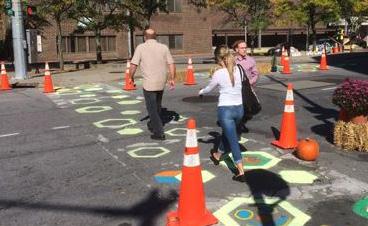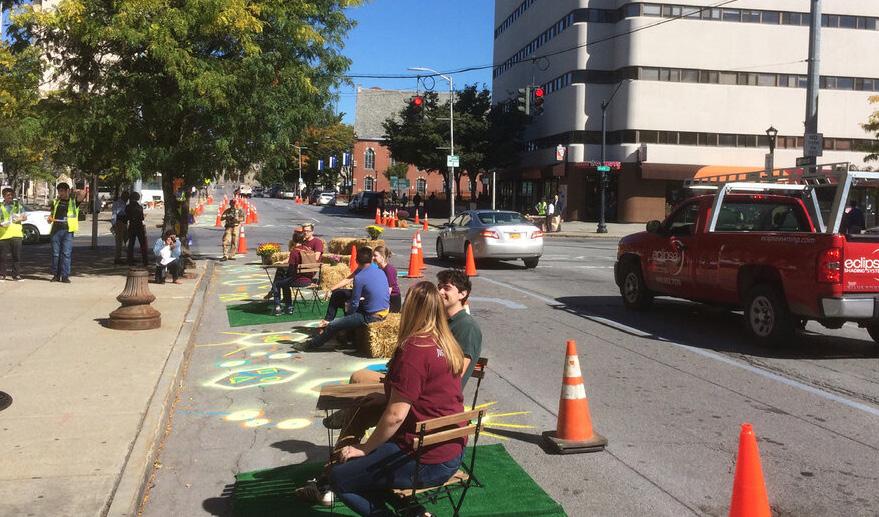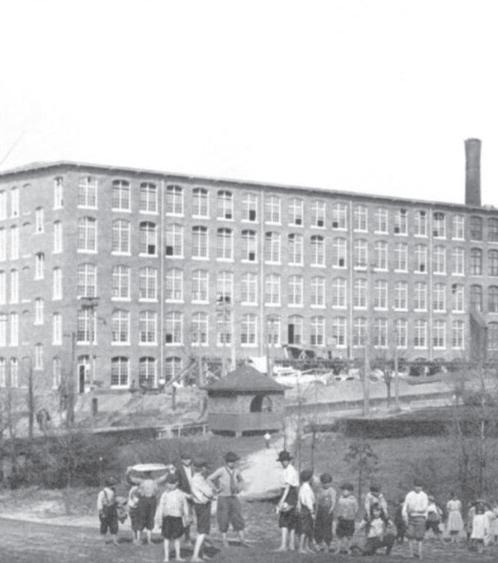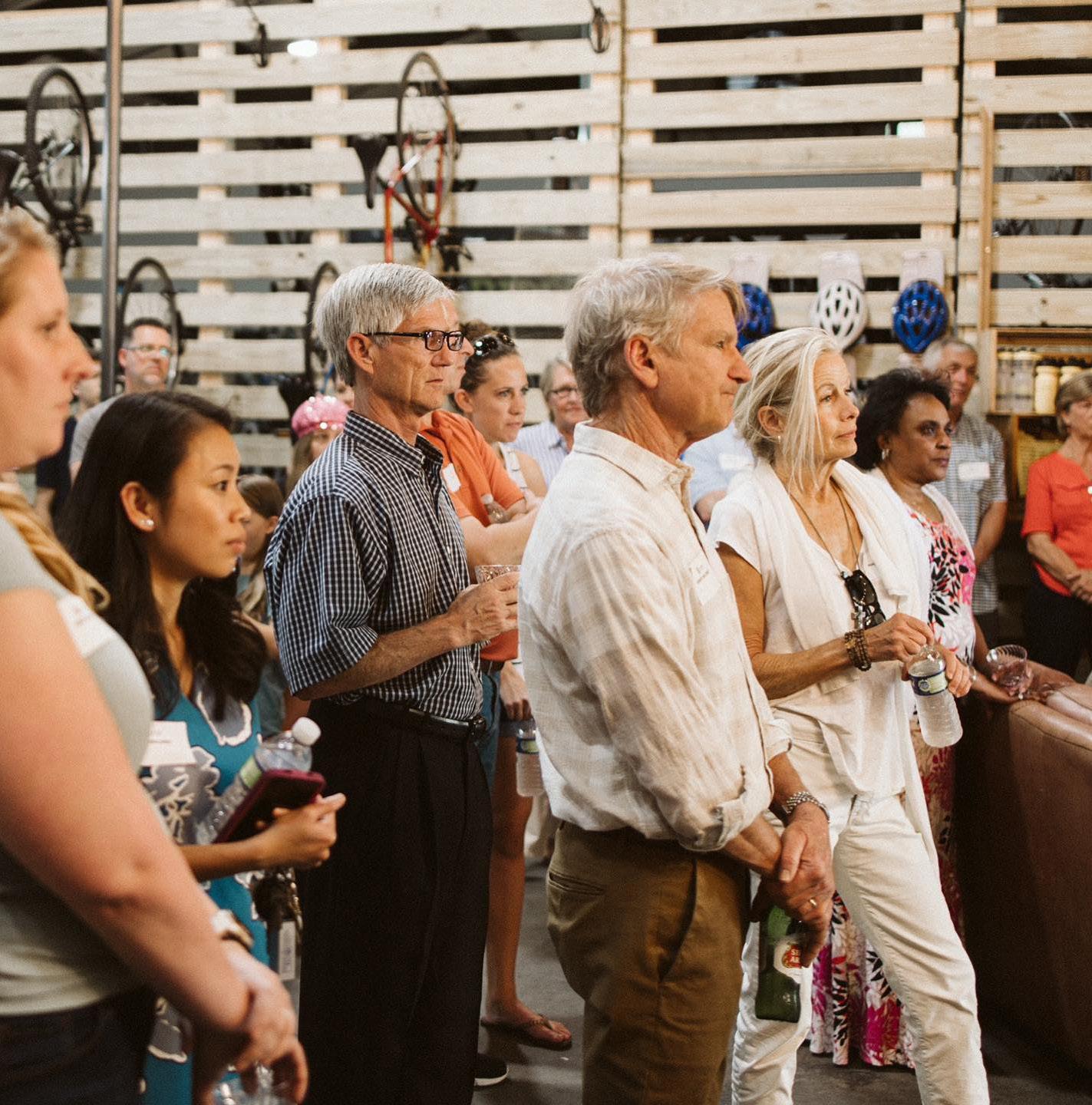
11 minute read
5.2 Collaboration
ȑ These recommendations aim to fill the gap between the fragmented community groups, stakeholders, and the Village of West Greenville’s activists. This goal will be achieved through multiple participatory and consensus-building policies. The goals of protecting Village character can be synergistically achieved through the integration with the three other policy categories of conservation, connectivity, and character. Because of conflict regarding new developments, the conservation board may encounter problems with implementation. The gradual step-by step consensus-building will help overcome conflict as soon as the communities realize their inclusion and impact in the decision-making process.
5.2a Conservation Board
Advertisement
Desired outcomes and benefits:
The community-based commission will facilitate informed and knowledge-based consensus on the Village’s development and character protection. The development guidelines will be determined based on preservation studies, Greenville’s comprehensive plan, and community input, assuring a clear understanding of the resources and procedures for the desirable results. An equally important role of the Conservation District Board is emphasizing the representation of all communities through the broader engagement process, community advocacy, and further empowering diverse groups.
Resources:
The city needs to assign a staff person as a liaison responsible for the Village of West Greenville to help facilitate policy goals. The existing historical studies and community groups provide an essential starting point to bring all stakeholders to the same table and empower them for positive changes. The city liaison should primarily have the resource and coordination responsibilities, possessing up-todate knowledge on the area development and building bonds between the different interest groups. At the same time, they will have such organizations as Mill village ministries, the Village of West Greenville Business Association, Upstate Forever, and neighborhood associations to start the outreach process from the educational and media platforms. Further, along with the community engagement, the appointed members representing Village visionaries, business owners, area residents, a planner, and design professionals would be elected to guide the balanced development of the Village.
Examples of successful applications from cases:
The area between Main and Church streets in Poughkeepsie was granted the National Register Historic District designation in 1971. The Union street district was under threat of demolition under the PURA - Poughkeepsie Urban Renewal Administration - plans. Once a major connector of a historical village, the street was formed by the mid-1800s brick houses. The newborn Dutchess County Landmarks association recognized the development both historically and culturally valuable as German, Scottish, and Italian immigrants` legacy, and the citizens valued them and affordable housing. Thus, the joint effort of the Landmarks and the Citizens` Advisory Committee allowed them to conduct an independent research and develop an alternative to the PURA plan supported by various city and community representatives. The NRHP designation requires an approval for the Union Street properties, while carrying no additional burden of development restrictions.
Specifics of the action:
The steps needed from the City of Greenville are to assign the responsible liaison person. In conjunction with the Village of West Greenville community, this representative will be a resource to establish the community’s review board. In the short term, a broad community outreach needed to be conducted to involve all the actors, including the underrepresented communities. This process will take time and different approaches to community outreach. In a longer perspective, the board could be appointed by a locally elected president, whose constituency would be those living within the conservation district’s boundaries. The qualification of the members are discussed earlier in section 4.2.a. Together, the board and president would have oversight on every new development in the neighborhood over 1,000 SF regarding the compatibility with the historic character and community needs. The team would represent local interests. It may also conduct its public outreach before working with the planning commission and city council to reach a binding decision. Altogether, this body, the West Greenville Conservation District Commission, would fill the void between city and Village communication and provide a specific method to bring residents and business owners together as part of one voice.
Anticipated opportunities and challenges:
Energized and motivated stakeholders will collaborate to contribute to the commission’s functioning. The local representative board and the existing development character will facilitate the historic protection for growth. The current disconnection between different area parts and groups and the external changing of character threats limits the opportunities for successful policy implementation. The board as a uniform entity representing the variety of Village stakeholders under the supervision of a city employee will facilitate the decision making process.
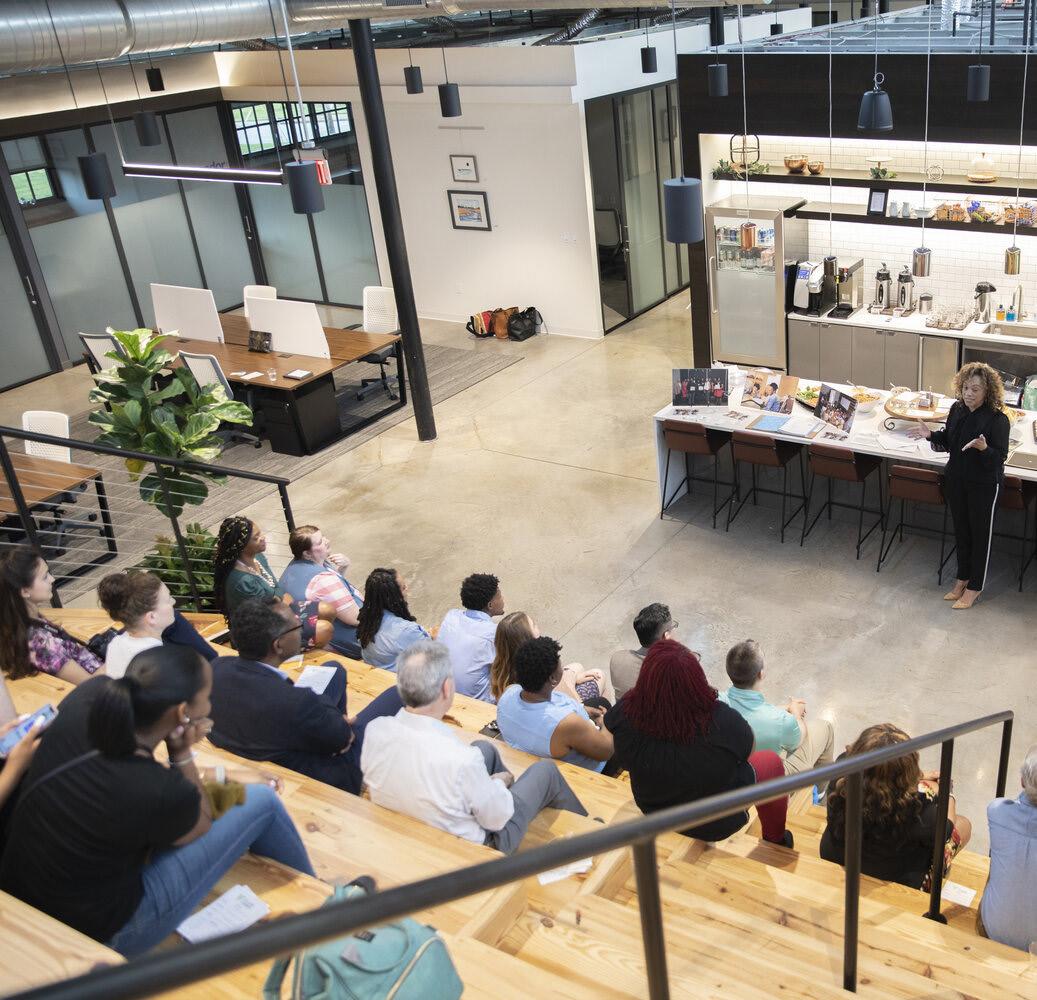
5.2b Education of Local Communities on the Planning Procedures
Desired outcomes and benefits:
Sharing the knowledge on the planning processes will provide for the mitigation of existing and prevention of potential conflicts over the changes in the area. A widespread understanding of the roles and responsibilities of private and public actors will help the community members address their questions, requests, and complaints properly and promptly. This approach also will help engage communities in the area of improvement with better communication and predictable results.
Resources:
This policy requires an organization representing community leadership and an existing venue functioning as a community center to support locals and work with the established infrastructure and communities. Involved community members, city representatives, and the local media will support the knowledge sharing. The educational program Citizens Planning Academy launched by Upstate Forever will be a good start for this recommendation. Upstate Forever has a clear and visually intuitive web portal, the audience’s knowledge, interest in building a sense of belonging, and knowledge of cityscape development and character protection. When the Conservation Board starts its operation, it can conduct these meetings in Poe West as a trusted and spacious venue.
Examples of successful applications from cases:
The community-based organizations and advocacy groups representing public interests compensate for the lack of city staff and officially empowered authorities in Poughkeepsie. Non-profits held by engaged citizens keep track of the new developments in the area to protect the historic character and locally owned businesses. Scenic Hudson, Hudson River Housing, Dutchess County Historical Society, Sloop Clearwater, and Nobody Leaves Mid-Hudson are all parts of the interconnected and collaborative Poughkeepsie ecosystem. Organizations run educational programming to support the revitalization and sense of belonging. As such, the Middle Main Initiative of Hudson River Housing organization helps share the understanding of demands and conditions of the surplus assets through the “Vacant to Vibrant” program (See Exhibit C for more details). It employs dynamic strategies to build upon them. Those organizations are supported with the state programs targeted at the art and local communities development. The not-for-profit organization Upstate Forever advocating for smart and balanced growth runs the Planning Academy for motivated citizens. This initiative must be taken as an example and partner in educating citizens on local planning and policymaking.
Specifics of the action:
The Village of West Greenville art district`s liaison, Conservation Board and respective non-for-profit will organize an educational series of meetings with communities and different actors involved to promote mutual understanding. As a short-term solution, the Village portal and the city might share knowledge on the city, county, and developers’ roles in a visually clear manner. The cartoons illustrating which spaces and actions are within different authorities and responsibilities will familiarize potentially conflicting communities and bring them into constructive conversation. In the long run, the community meetings will allow for mitigating the development conflicts before they exacerbate them.
The program might invite speakers from the Upstate forever academy for the chosen sessions and further focus the attention on the processes happening in the Village of West Greenville. The Village Conservation Board and its representatives will be required to go through the program to obtain a broad and fact-based understanding of the legislative and administrative context of the area. This knowledge will also help residents understand when and whom to appeal to in case concerns over the area’s development arise.
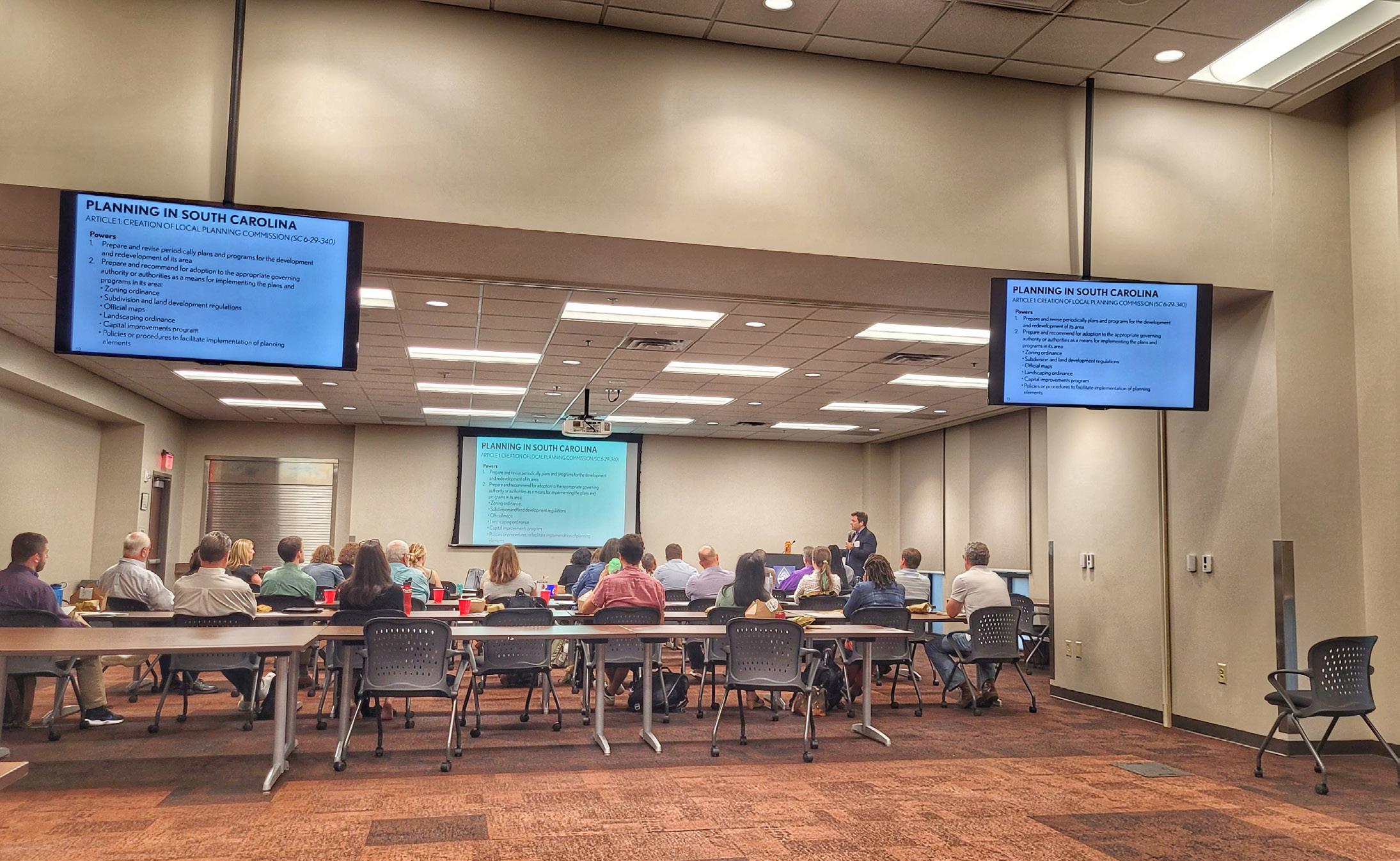
Anticipated opportunities and challenges: There are two significant impediments to this initiative - fragmentation between community groups and an anti-development conservative attitude. The time and vision resources of the local philanthropies and creative community will contribute to this initiative and improve collaborative efforts. As mentioned in the Village Micro plan, the Village of West Greenville is currently zoned as an RDV or a redevelopment district. An RDV is not compatible with the current character of the Village, which means future development will not reflect the surface in terms of density and appearance. This has been reflected through potential developments like the Woven Project. The current structures are one-story masonry buildings in the commercial district, and the residential is mainly made up of one-story mill houses. The Woven Project plans to create a high-density, mixed-use building for retail, commercial, and residential. The associated threats of local traffic congestion should be mitigated while keeping the community’s trust in the city and potential area development.
5.2c Village Arts Foundation
Desired outcomes and benefits:
Promoting the area status of the creative district will facilitate the local community and city in general in cultural and economic development. Multiplication of the tourist inflow and service economy will be possible with the branding. Broader sharing of the local attractions will enforce education and engagement of the leaders of the art community and attract more target audiences to the area.
Resources:
The Foundation involving the main creative actors and services will create a map of the area, calendar of events, and art news on a visually intuitive web platform. We recommend building this initiative upon the resourceful organizations already in the area. Since the art community is specific and needs strong shared values and goals to collaborate, the Metropolitan Arts Council will be a trusted platform to promote the Village of West Greenville as a separate branch within the Greenville ecosystem of cultural leaders. The Village of West Greenville Business Association is also a potential partner of this initiative. The Foundation will use social media to promote the area’s art and small business scenery. Mill village ministries might provide media support and accommodate Foundation events within its network of local projects as an umbrella association interested in bringing equity and prosperity to Greenville communities. Art and creative community, the status of an art district, and web publications of the interviews and stories from local business owners will contribute to the attractiveness of the local art for visitors. In the longer timeframe, the policies targeted to support young artists and professionals are needed to build a more robust art network. The existing art venues, such as the Greenville Center for Creative Arts, the Flatiron Studios, and Arts Bomb, can be initial locations for the foundation meetings. The Village’s art events need to partner with the Friday Gallery crawl. The Village Launch Business Entrepreneur Academy can provide a needed place, audience, and ecosystem for this initiative to enforce art leadership and accelerate the Arts Foundation web portal.
Examples of successful applications from cases:
Arts Mid-Hudson portal and Travel Hudson Valley were established to promote the area as a scenic and attractive creative destination. Marketing experts, communitybased cultural centers, local activists familiar with the stakeholder network, innovative businesses, and new developments - all these assets and actors are represented through the web-resources. Organizing the tourist portal for the wider area with all the local stakeholders and attractions provides easily accessible information to facilitate business owners, community-based organizations, and visitors. Also, it helped bring cross-jurisdictional and cross-boundary collaborative branding and programming based on the local creative community – festivals, exhibitions, and closedstreets days. The program ties city assets and natural landscapes to multiply the inflow and interest to the designated sites, emphasizing the art scene. The source of support for the project - county office of tourism and New York State programs.
Specifics of the action:
The community liaison, primarily assigned as head of the district board - needs to communicate with the Metropolitan Arts Council to unite the actors of the Foundation and start the portal. As the short term action, a web-portal shall be activated under the Foundation supervision. The Metropolitan Arts Council along with City and State sources might be contributors in terms of the upfront funding and informational support. To assure the suitable maintenance and operation resources, the newly organized not-for-profit organization shall apply for the state grants such as the South Carolina Arts Commission General Operating Support (https://www. southcarolinaarts.com/grant/gos/). Most local active art and business community representatives will be involved in regular interviews to provide engaging content for publications. Business incubators, educational institutions, historic resources, and ongoing startups support the Village’s creative activity and will enforce the operation of the Village Arts Foundation in the long run.
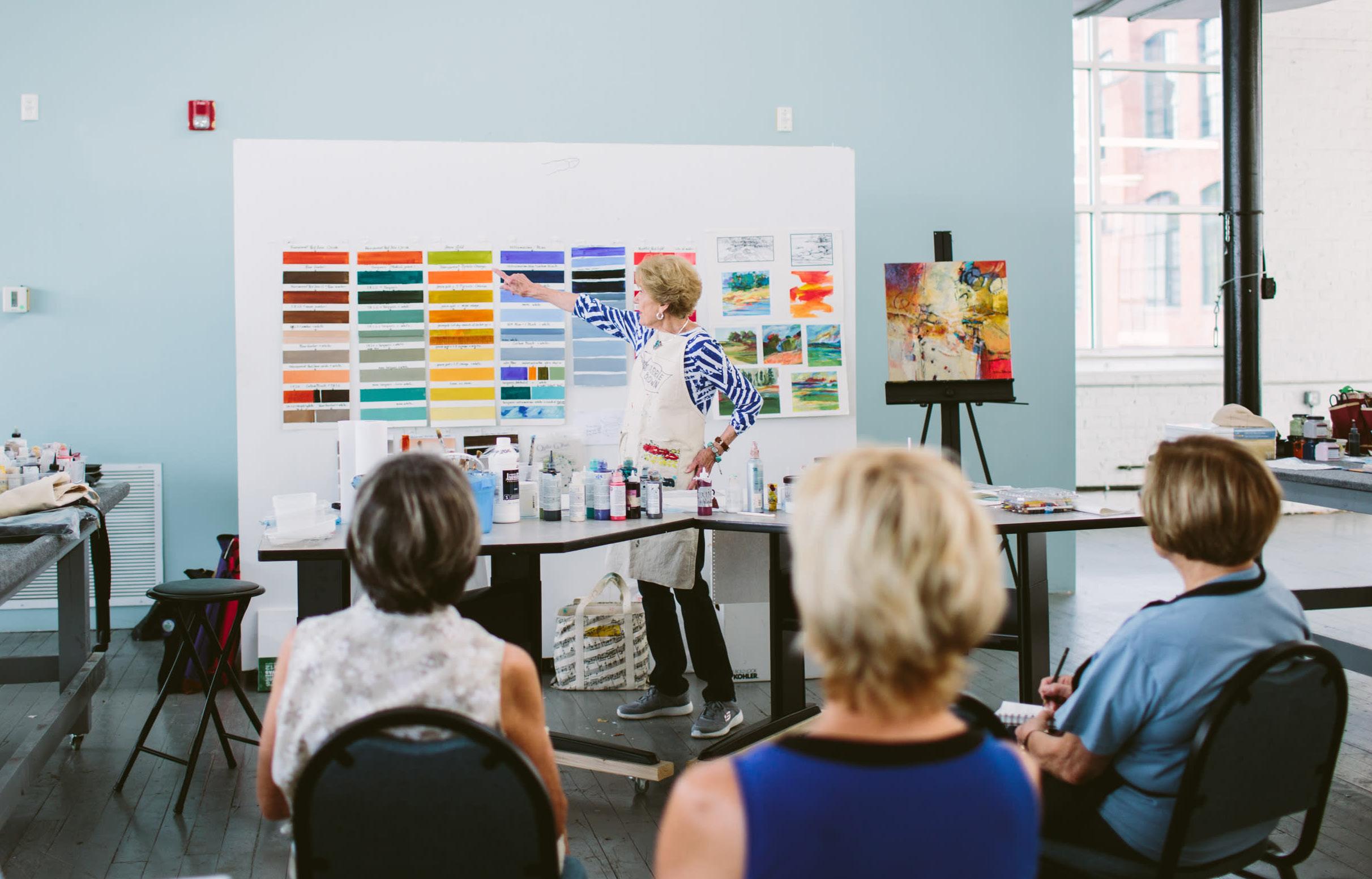
Anticipated opportunities and challenges:
The Village represents innovation and helps facilitate it further by investing in the creativity that supports its micro-economy. Artists were driving the new wave of the Village’s vitality in the 2000s. They took over abandoned buildings with cheap rent, turning them into galleries and studios. This stimulates creativity in the area and brings interest to the local art scene. Local philanthropies, artists, and business owners will provide the Foundation’s task force to present local values publicly.
5.2d Tactical Urbanism
Desired outcomes and benefits:
Temporary and short-term outcomeoriented improvements involve the local art community in the streetscape development and amplify the voices of residents and community stakeholders. The co-creative process helps build bonds and reinforce the sense of belonging, local community requests and demands fulfillment, and empowering people to take proactive decisions. The gradual, “testbefore-invest” approach to streets improvement and active art representation will encourage transportation connectivity and bring attention to the historical highlights and now-defunct industrial buildings.
Resources:
To integrate tactical urbanism in other city-run participatory planning efforts, political leaders will need to coordinate funding support for local artists and further communicate the timing with the Transportation department. Metropolitan Arts Council can lead the first tactical urbanism events as a part of the First Fridays gallery crawl. As soon as the city assigns a community liaison person, the Conservation District Board might provide this alley for participation, working with the creatives in a more specific way. Then the ideas for the tactical interventions might be submitted and accepted competitively, with broad outreach and call for proposals from the community. The newly established Village Art Foundation and the respective web portal will help promote and inform on the planned and ongoing events. Temporary installations at specified locations might be supported with materials and resources from the local business owners or take a minor part of the annual street improvement budget. Both organizations will be in charge of fundraising through state and federal programs and collaborating with businesses. As the best practices demonstrate, local businesses - stores, restaurants, studios - can benefit from the temporary outdoor walkable spaces, serving as promotional installations.
Examples of successful applications from cases: The city of Poughkeepsie initiated the Market Street Connectivity one-day event within the more comprehensive City Center Connectivity Project. The initiative aimed to develop improvement solutions involving artists and local communities instead of arranging another charrette to a certain extent, demonstrating the need for more public interest and results. The experiment included closing up Market Street for traffic, setting tables and planters, and asking street visitors for feedback in surveys and interviews. The approach allows testing out and empirically assessing new street designs before making capital improvements associated with financial and political commitments to permanent infrastructure. The demonstration projects allowed for a “test before invest” approach and showed that desired changes could happen quickly, especially when the collaborative effort involved most of the communities and the city provided light and temporary materials to accomplish a test intervention. Different purposes encourage differing forms of installations, as it can be seen from the multiple examples of tactical urbanism in practice. For instance, the NY Department of Transportation is partnering with the local organizations to reclaim the public space for temporary plazas. While the DOT funds the improvements, the organizations are required to coordinate the public outreach, participate in design with the DOT team, program community activities, and maintain the space. (https://www.nyc.gov/html/ dot/html/pedestrians/nyc-plaza-program. shtml) Smaller but still valuable changes can be obtained by local scale greening and planting, as the placemaking on the Newark Downtown District parklets program demonstrates (https://downtownnewark.com/ ndd-programs/placemaking/) . The board of this non-profit organization dedicated to enhancing Downtown Newark supervises the Special Improvement District within the city downtown and organizes the parklet as public spaces in support of the local businesses located nearby. The funds needed for these improvements are raised by the organization.
